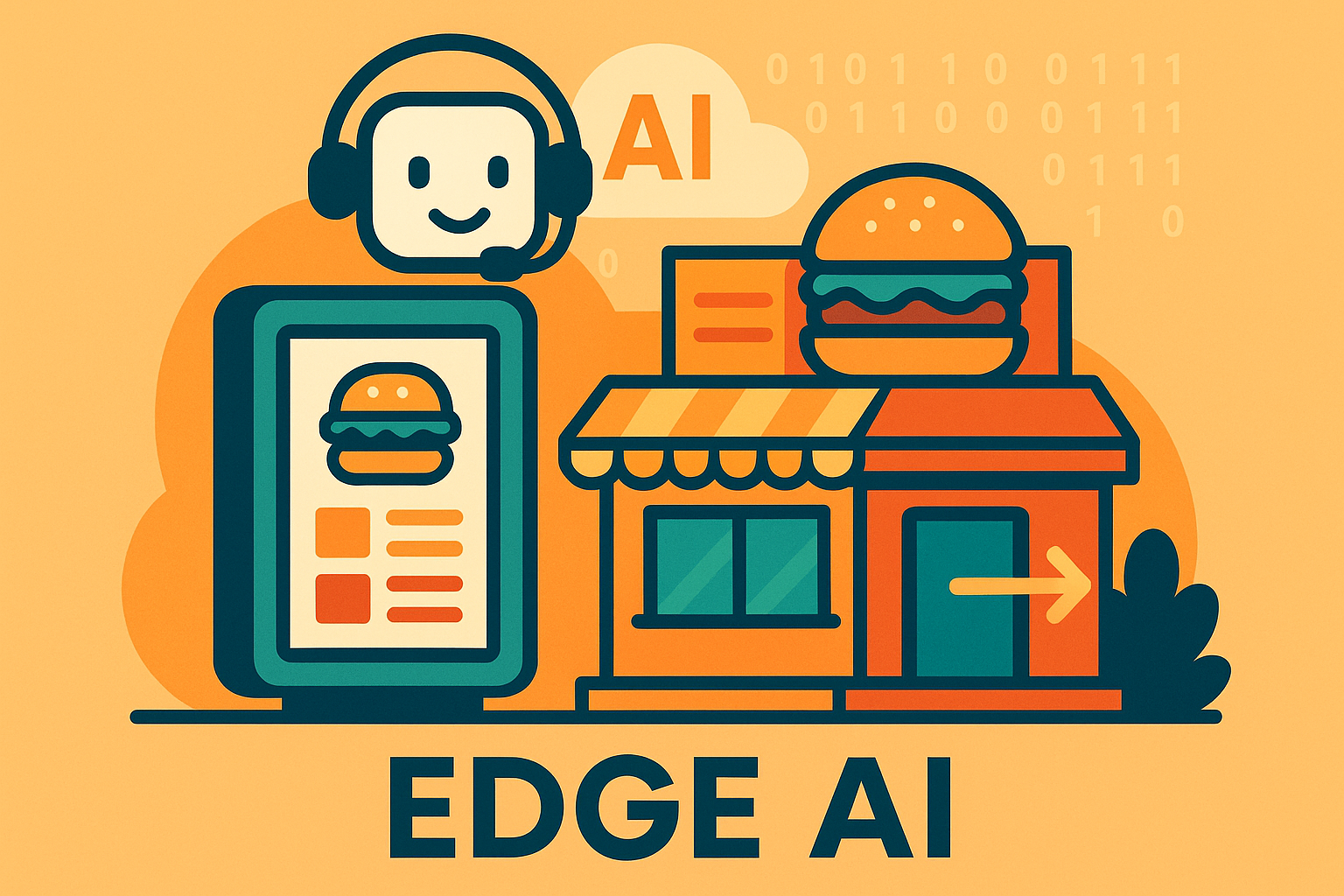Introduction
While cloud-based AI has driven much of the progress in machine learning and automation, the future increasingly lies at the edge — closer to where data is generated. One high-profile example is McDonald’s. By deploying Edge AI at its drive-thru systems, the fast-food giant is reshaping the customer experience, reducing latency, and optimizing operations in real time.
In this article, we’ll explore what Edge AI is, why McDonald’s is betting on it, and what this means for broader industries. We’ll also tie this trend back to the hardware limitations of centralized AI — as explored in this article.
What Is Edge AI?
Edge AI refers to the practice of processing AI data locally, on devices close to the source (e.g., sensors, kiosks, cameras), rather than sending all data to the cloud.
Key advantages:
- Reduced latency
- Lower bandwidth usage
- Enhanced privacy
- Real-time decision-making
This is particularly vital in environments that demand immediate response — such as a busy McDonald’s drive-thru during peak hours.
Case Study: McDonald’s and Edge AI in Action
McDonald’s has explored the use of Edge AI in its drive-thru lanes to enhance speed, accuracy, and customer experience. This initiative gained momentum in 2019 when the company acquired Apprente, a Silicon Valley startup specializing in voice-based AI systems. The goal was to implement automated order-taking (AOT) technology that could operate on-site using local edge devices.
Key objectives included:
- Accelerating service through real-time voice recognition and order processing
- Personalizing recommendations based on license plate recognition and previous orders
- Minimizing cloud dependency, ensuring performance in areas with inconsistent internet access
To scale this effort, McDonald’s entered a strategic partnership with IBM in 2021, transferring Apprente’s technology and team to the tech giant. IBM was tasked with refining and deploying the system across thousands of locations.
However, by 2024, McDonald’s decided to end the pilot program. Reports indicated that the AI system struggled with order accuracy and customer satisfaction — for example, confusing items or mishearing orders — prompting the company to pause further rollout. Despite the setbacks, McDonald’s emphasized that AI remains a core part of its long-term strategy.
“We will continue evaluating long-term solutions, and AI remains a key component of our restaurant innovation.”
— McDonald’s spokesperson (The Guardian, 2024)
This case illustrates both the promise and complexity of Edge AI in real-world retail environments. While the technology offers transformative potential, scalability and reliability remain challenges — reinforcing the need for iterative development and context-aware deployment.
Why Edge AI, Not Cloud AI?
Cloud AI systems rely on centralized GPUs and high-bandwidth internet. This creates delays and potential bottlenecks, especially during peak usage.
Edge AI avoids this by:
- Processing data locally
- Running on customized AI accelerators (e.g., NPUs, ASICs)
- Delivering faster, more reliable service
For a deeper look at these hardware constraints, read our related article:
GPU Limitations and the Future of AI Hardware
Beyond McDonald’s: Industry Implications
McDonald’s isn’t alone. Industries like healthcare, manufacturing, and retail are investing heavily in edge solutions. The ability to make split-second decisions without cloud dependency opens up new business models and automation possibilities.
Challenges of Edge AI
While Edge AI offers clear benefits, it also presents some significant challenges that organizations must address:
1. High Hardware Deployment Costs
To enable AI processing at the edge, each physical location—such as a store, factory, or vehicle—requires dedicated AI-enabled hardware (e.g., NVIDIA Jetson, Google Coral). For large-scale deployments across thousands of sites, like McDonald’s restaurants, the initial costs for purchasing, installing, and maintaining this hardware can be substantial. These upfront expenses often become a key barrier to adoption, especially for smaller businesses.
2. Complex Data Synchronization with Central Servers
Edge devices process data locally, but companies still need to synchronize this data with central servers or cloud systems for broader analysis and decision-making. This can be technically complex, as devices may operate in different environments, time zones, or connectivity conditions. Ensuring data consistency, accuracy, and real-time integration becomes increasingly difficult at scale.
3. Security Vulnerabilities at Local Nodes
Unlike centralized systems, Edge AI introduces multiple potential points of attack, as the processing units are distributed across many locations. These edge nodes are physically more accessible and may not be updated as frequently, making them more vulnerable to cyberattacks or tampering. A compromised device could lead to data breaches or even operational disruptions.
Final Thoughts
McDonald’s Edge AI implementation highlights a growing trend: bringing intelligence closer to the data source. As devices become smarter and custom chips more accessible, Edge AI will likely define the next wave of innovation.


Leave a Reply